 The Franciscan family does not have many hierarchical ranks. It is made up of sisters and brothers. Poverty, however, receives a special appellation – it is Our Lady. It is not only a sister like the moon or water. To it is given the honour that a jester with a knightly spirit bestows on a beloved. Francis loved poverty in a radical way and strove for its integrity, enduring the bitterest struggles of his existence. Near to him were the ‘mediocre’ who attacked his ideal. They were prelates and scholars, Provincials and Superiors, and ordinary friars who loved to settle down in well-constructed houses and take possession of them. Camillus encountered a similar conflict when Fr. Oppertis sought to lighten the burden of religious when providing care in hospitals. The dilemma that presented itself was severe: either save the purity of the ideal or ensure the survival of the Order. The question still remains an open one. Is it more important to survive with compromises or disappear remaining ‘pure’? Both Francis and Camillus, albeit with a heavy heart, bent to the inevitable process of the codification of their idea. However, their personal happiness did not oscillate.
The Franciscan family does not have many hierarchical ranks. It is made up of sisters and brothers. Poverty, however, receives a special appellation – it is Our Lady. It is not only a sister like the moon or water. To it is given the honour that a jester with a knightly spirit bestows on a beloved. Francis loved poverty in a radical way and strove for its integrity, enduring the bitterest struggles of his existence. Near to him were the ‘mediocre’ who attacked his ideal. They were prelates and scholars, Provincials and Superiors, and ordinary friars who loved to settle down in well-constructed houses and take possession of them. Camillus encountered a similar conflict when Fr. Oppertis sought to lighten the burden of religious when providing care in hospitals. The dilemma that presented itself was severe: either save the purity of the ideal or ensure the survival of the Order. The question still remains an open one. Is it more important to survive with compromises or disappear remaining ‘pure’? Both Francis and Camillus, albeit with a heavy heart, bent to the inevitable process of the codification of their idea. However, their personal happiness did not oscillate.
The Franciscan idea of poverty is so charismatic that only with difficulty does it lend itself to being extended to a large number of people. Francis wanted his religious to be ‘mendicants’, with all the consequences inherent in the meaning of the term: detachment from ‘power and dominion’; a life of dependence on the alms of other people; forgoing all possession of goods; the abandonment of family relatives and self-denial; and the rejection of all precautions in journeys, even a horse. Sent out into the world without any supplies, above all money, a friar was aware of his condition of being a beggar. Before him, nothing was certain. He did not know whether he would be offered hospitality or rejected; if he would find help or otherwise; if he would eat or if he would have to fast. The poverty of a monk closed up in his monastery and connected with the stabilitas loci was different.
The use of a horse was prohibited for travelling. The mendicant did not seek distant destinations. His task of evangelisation was to be performed here and there. Interdiction, however, was justified with reference to the spirit of poverty. Connected with the concept of a ‘mendicant’, was also the prohibition on living in stone houses so as to be more similar to Christ who had nowhere to rest his head. A solid home could lead us to forget our condition of being pilgrims and strangers who live entrusted to the risks of almsgiving. Francis followed this rule of his and to such an extent as to order his religious, even the ones that were sick, to abandon a house made of stone in Bologna and to demolish another one that had been specially built for the Chapter of 1221 in S. Maria della Porziuncola. A friar was a ‘hosper et viator’ and not a ‘habitatoe’. This was a subject that had a determining influence in the anthropological outlook of Bonaventure, the theoretician of Franciscanism. The dwelling had to be poor, like a hut, made of wood and straw, so as not to give the idea of stability.
As regards receiving alms, a friar was also invited to engage in modesty. He could receive only what was needed to end his hunger and clothe himself. He could never receive money which was seen as dangerous as a snake and as ignoble as dung. The Rules allowed him to have it for exceptional reasons, for example when it was requested for sick people. However, he was not allowed to receive it to give it to the poor or as a payment for work that he had done.
Faithful to his vocation to being a mendicant, Camillus also continued to stress his rejection of money. In his first Rules, side by side with detachment from all possessions, he laid down that: ‘No one will strive to have money’; service to the sick was to be done ‘out of pure love for God, not for material reward’; ‘nobody should handle money’ in hospitals; legacies were to be refused; ‘poverty should be entirely conserved in its purity, nobody possessing anything as his own, nor keeping money’. In his testamentary letter Camillus prophesied: ‘the more poverty is observed, the more our institute will be conserved’. He rejected as a deception the thought of ‘not being able to live by alms alone’. He also declared: ‘I would prefer to sleep with a dragon than with money’. Why was there this obsession with money? Poverty was not only a detachment of the heart, perhaps accompanied by secure property which would, in fact, impede being exposed to precariousness. Being poor without actual risks and real forgoing was a mystification. To be truly poor it was necessary to be satisfied with what was required at any given moment: food, medicine, clothes. Food was to be consumed right away and did not keep for long. Such was not the case with money which was the master of tomorrow, created security and above all allowed easy rewards of one’s desires without hard work; it was a little like the magic wand of Midas which turned stones into bread.
The inspiration of poverty, both Franciscan and Camillian, drew its lymph from Christ who made himself completely equal to men in taking on the condition of a slave. Just as God in the person of Christ loved the crucified as a crucified man, and the condemned as a condemned man, so the mendicant loved the poor as a poor man. Christ was seen not only as the way that leads up to the Father but also as the way that descends to the humble. For this reason, as regards feast days Francis preferred Christmas because from its proclaiming of spoliation he learnt the meaning of Christian poverty. This poverty did not involve distributing things to the poor but living like them.
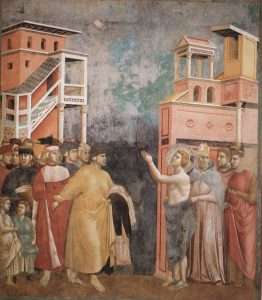 Poverty required cutting the affections of blood ties in order to belong to everyone: young people, the poor, the abjectly poor, kings and princes, workers, peasants, servants and masters, virgins, widows and married women, lay people, men and women, children, adolescents, young people, old people, sick people, healthy people, the small and the great. It was easier for a man to give his heart to a woman than devour it in service to a group of lepers or orphans. Gospel poverty corrected affections and taught to love in a detached way. It thus recognised its opposite in selfishness and pride more than in wealth. For this reason, it was a value at the service of charity and communion. Both Francis and Camillus were drastic as regards money but accepted it if this was a matter of helping the sick.
Poverty required cutting the affections of blood ties in order to belong to everyone: young people, the poor, the abjectly poor, kings and princes, workers, peasants, servants and masters, virgins, widows and married women, lay people, men and women, children, adolescents, young people, old people, sick people, healthy people, the small and the great. It was easier for a man to give his heart to a woman than devour it in service to a group of lepers or orphans. Gospel poverty corrected affections and taught to love in a detached way. It thus recognised its opposite in selfishness and pride more than in wealth. For this reason, it was a value at the service of charity and communion. Both Francis and Camillus were drastic as regards money but accepted it if this was a matter of helping the sick.
‘Poor’ was a ‘synonym’ for ‘minor’ and in its meaning was the implicit idea of service and charity, the acceptance of injuries and contempt, full readiness to be welcomed into the kingdom of God, humility, the position that one occupies in common life, and modesty in the enjoyment of possessions. Francis, ‘the minor of all the minors’, breathed discontentment before a table prepared carefully on Christmas day because he did not think it appropriate to a mendicant who goes from door to door. ‘The solemnities of the Lord are more honoured with indigence and poverty’. ‘Minor’ expressed a programme of forgoing prestige. Thus side by side with those who aspired to become the ‘greatest’, were those who sought to become the smallest: the minors. The cross was to be accepted with its madness. Francis was a madman because of his love of the cross. ‘The Lord revealed to me that I was a madman in the world’.
From poverty was born the feeling of humility which Camillus, a humble friar, in particular, had assimilated, believing that he was ‘simple and an idiot’, ‘unworthy of the vocation to charity’, and ‘an ignorant sinner and full of many defects’. After doing everything possible, he thought he had done nothing. He did not accept being thanked for the service he had rendered and to those who drew near to him in submission he confessed that he was nothing more than a servant and, in addition, useless.



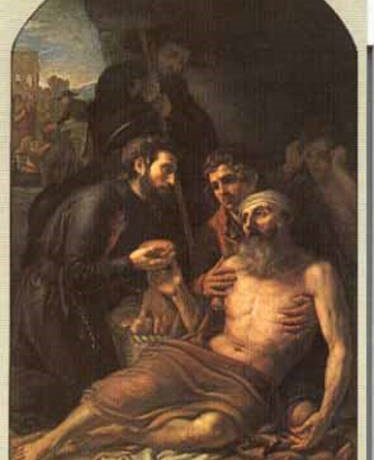
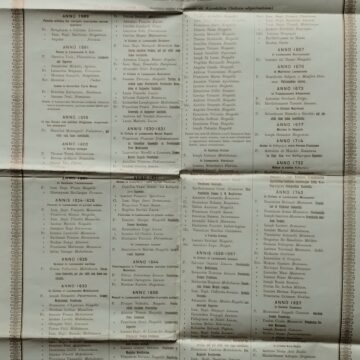
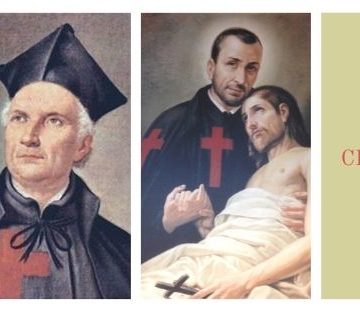






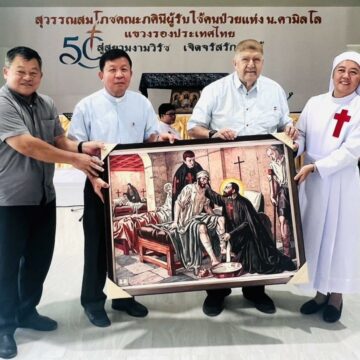
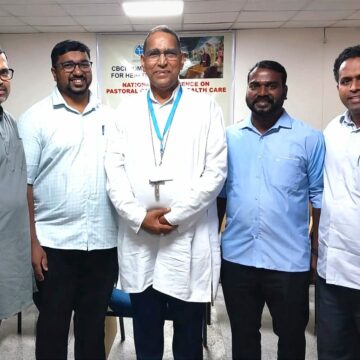
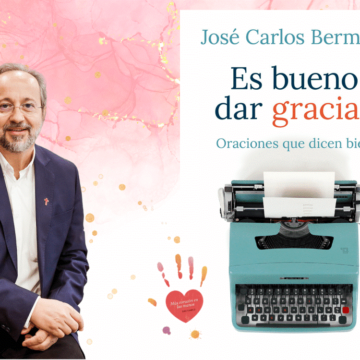

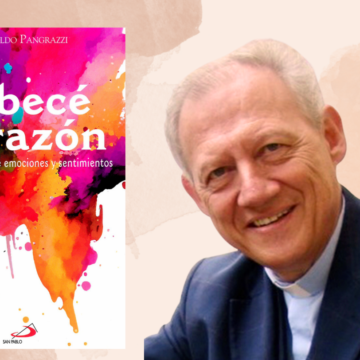
Camillians on Facebook
Camillians on Twitter
Camillians on Instagram